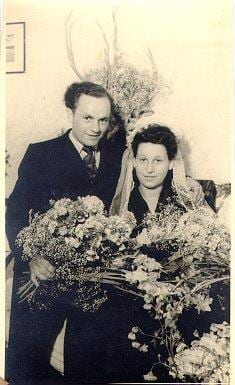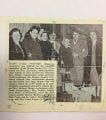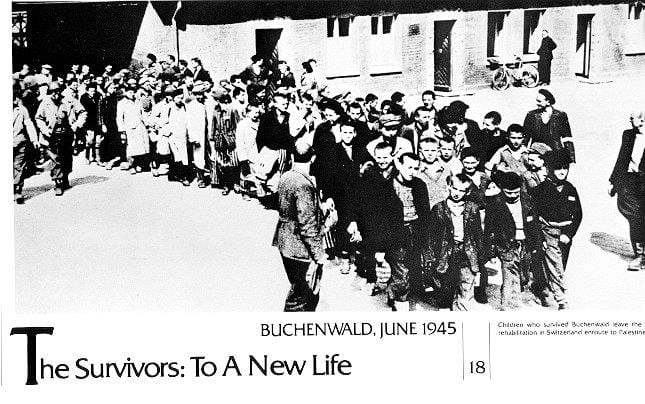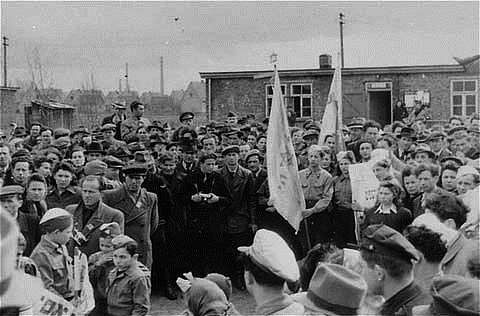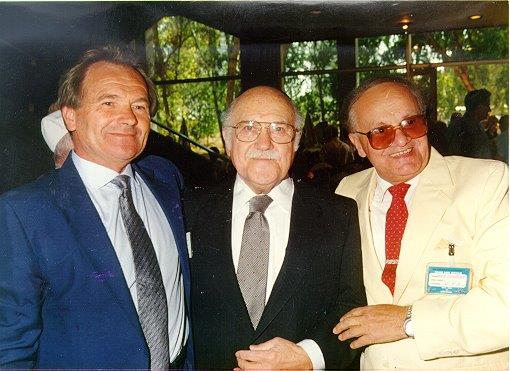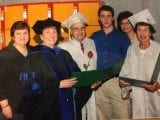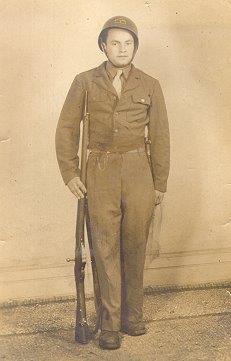- Local Survivor registry
- DAVID SCHWARZBERG
- Local Survivor registry
- DAVID SCHWARZBERG
Survivor Profile

DAVID
SCHWARZBERG
(1924 - 2013)
PRE-WAR NAME:
DAVID ISRAEL SCHWARZBERG
DAVID ISRAEL SCHWARZBERG
PLACE OF BIRTH:
KOZIENICE, POLAND
KOZIENICE, POLAND
DATE OF BIRTH:
JULY 9, 1924
JULY 9, 1924
LOCATION(s) BEFORE THE WAR:
KOZIENICE, POLAND
KOZIENICE, POLAND
LOCATION(s) DURING THE WAR:
KOZIENICE GHETTO AND RADOM, YELNO, SKARZYSKO AND BUCHENWALD CONCENTRATION CAMPS (LIBERATION, MAY 11, 1945)
KOZIENICE GHETTO AND RADOM, YELNO, SKARZYSKO AND BUCHENWALD CONCENTRATION CAMPS (LIBERATION, MAY 11, 1945)
STATUS:
SURVIVOR
SURVIVOR
RELATED PERSON(S):
SARAH CEDARBAUM SCHWARZBERG - Spouse (Deceased),
PEPPY MARGOLIS - Daughter,
ROBERT SCHWARZBERG - Son,
ESTHER SCHWARZBERG SHULMAN - Daughter,
LISA MARGOLIS - Granddaughter
-
BIOGRAPHY BY NANCY GORRELL
Biography Adapted from Nick Del Calzo, The Triumphant Spirit: Portraits and Stories of Holocaust Survivors
“Auschwitz is not to understand. Auschwitz is to remember”–David Schwarzberg
David Schwarzberg was born in Kozienice, Poland, in 1924. He was 14 years old when Poland fell to Germany. He remembers the random killings and the cries of children being separated from their mothers. The Nazis established a Jewish ghetto in Kozienice shortly after the war began. “They brought people into the ghetto from all around. My family had two rooms. They put another 16 or 18 people in with us. I said, “This is the end.” But for David, it was only the beginning. He was taken to the camps of Radom and Yelno and labored for two years. He returned to the ghetto at the end of 1942. Late that year, the ghetto was liquidated.
David was sent by truck to Skarzysko in Poland. There he worked moving steel to make grenades. David was badly injured when a piece of steel fell on his foot. Often an injury was a death sentence, but David survived. In an unusual twist, it was also at Skarzysko that Schwarzberg met officer Loeffler, an SS man who saved his life on more than one occasion. Loeffler provided David with extra bread for nearly two years. When David was wrongly accused of stealing in the camp and was sentence to be executed, Loeffler got him released and then moved him to a different area of the camp.
In 1944, David was transferred to Buchenwald. The end of the war was near, American bombs fell, and the inmates were taken to another camp. There, David worked in a factory as an engineer. Then, forced on a death march, David was sent back to Buchenwald and arrived on April 10. On April 11, 1945, the U.S. Army liberated the camp. After the war, David searched for his family and found that two of his five siblings had survived as well as three cousins who were hiding near the Warsaw ghetto. He met his future wife, Sarah, who is a survivor of Auschwitz. They married and had their first child, Peppy, while still in the Displaced Persons Camp outside Frankfurt, Germany. David and Sarah’s daughter was one of the first babies born of the generation that was not meant to be.
The Schwarzberg family was brought to New Jersey in 1950 by HIAS, the Hebrew Immigrant Aid Society. They were greeted by the Bergen County Committee for New Americans, and local leaders from Westwood, New Jersey, where the family settled upon their arrival (Refer to newspaper photograph in Related Media). They had two more children, Robert and Esther. In 1995 David and his daughter Peppy, a Holocaust educator in New Jersey, returned together to Buchenwald to mark the 50th anniversary of David’s liberation. This time, David was an honored guest.
Editor’s Note:
Refer to Historical Notes below for Zeilsheim Displaced Person’s Camp
-
SURVIVOR INTERVIEW:
DAVID SCHWARZBERG INTERVIEW WITH PEPPY MARGOLIS, DAUGHTER
Location: Raritan Valley Community College, Branchburg, New Jersey
Date: May 22, 2017
Interviewer: Nancy Gorrell
Q: Describe your father’s background.
My father was born in Kozienice, Poland on July 9 1924. It was a small shtetl. My grandfather was a scribe, he wrote torah in the shtetl, and he was also in the leather business. My father used to help in the store, and my grandmother stayed home and cooked. My father was one of five siblings. I think there were four brothers and one sister. My father loved to talk about the shtetl. A cousin lived next door; that cousin survived with him. They were poor. He used to sit in front of the bakery and pretend he was eating and just smell the food. He was a major character.Q: Did he ever talk about his education?
At 14 he was taken to the ghetto. He never talked about public school so it must have been about studying torah. I’m sure there were Hebrew studies. They were very poor. Never left the shletl. He had a cousin who was brilliant—he became an architect and went to Warsaw to study. I think his name was Sam Alden; his son became a noted architect and professor at the University of Pennsylvania.Q: Did your father experience anti-Semitism in the early days before the war?
He must have experienced anti-Semitism before the ghetto, but he didn’t speak about it. I’m sure if it occurred, he would have stood up to it.Q: What happened to your family when the war began?
In 1939, a ghetto was established in his hometown of Kozienice. My father was 15 and eventually went to Radom and Yelno labor camps. He was there for two years.Q: What happened to rest of the family?
The liquidation of the ghetto was in 1942, and my father was sent to Skarzysko labor camp to build ammunition and grenades. He went there with his cousin Joe, and his brother Jacob. There was another brother who was married and working in another labor camp. The rest of the family went to Treblinka, where they perished.Q: How did the rest of the family survive?
The survivors were his brother, Jacob, plus Joseph and Joseph’s wife, Stella. They had a baby a year before me in the Labor Camp and the baby didn’t survive. My father’s brother, Jacob who looked just like my father survived also. Jacob went to Israel in 1948, and fought for the war of Independence in Israel. My father was in Skarzysko for two years. There was a Nazi officer, Hans Loeffler, who saved my father’s life more than one time. He gave my father extra bread everyday to keep him alive. My father shared the bread with his cousin, Joe, and brother, Jacob. My father believed that this Nazi was a good man. My father never saw him kill a Jew. My father recommended he be honored at Yad Vashem. But they would not honor a Nazi. I wanted to thank Loeffler, but I have not been able to locate him or his family.Q: What happened to your father after Skarzysko labor camp?
In 1944 my father was transferred to Buchenwald. My father always talked about being in Buchenwald where he met Elie Weisel and Rabbi Yisrael Meir Lau, who became the head Rabbi of Israel. My father and his friends hid Yisrael Lau who was a young child at the time. Before Liberation, his brother, Jacob, was sent somewhere else—the camp in Prague, Theresienstadt. They found each other later in Salzheim, the DP camp. My father was still with his cousin Joe in Buchenwald concentration camp.Q: Describe your father’s liberation from Buchenwald.
My father was liberated on May 11, 1945. Upon liberation, they organized a Passover seder (refer to historical photo). On April 27, 1945 all the children who survived Buchenwald were taken to France to medical centers to be rehabilitated. His cousin, Joseph, was taken there, and he became Elie Wiesel’s friend and roommate. They remained friends for a lifetime. Upon the 60th anniversary of the liberation of Buchenwald, I organized at Raritan Valley Community College, a reunion of Rabbi Herschel Schecter and my father, who walked on stage together and embraced.Q: What happened to your father after liberation?
He went to Frankfurt Am Main to a Displaced Persons camp, in Zeilsheim, Germany (12 miles west of Frankfurt) in the American occupied zone. He met my mother in the DP camp, and they married at the end of October 1945, and I was born in the DP camp on July 19, 1946. They waited four more years before they could emigrate—two years in Zeilsheim, and two years across from the train station in Frankfurt.Q: What memories do you have of the Displaced Persons camp?
My memories are actually mixed. I remember being cold and hungry. The only food in the DP camp was potatoes, soup, bread and milk. Also eggs. I’m allergic to eggs. There was no formula, diapers or vitamins. But I was very much loved. I was one of the first babies to be born after the war. I was kissed all day. My uncle Jacob was there. I loved my uncle Jacob. He took me to the Frankfurt zoo. My father and mother took me too. I have a picture of me on a donkey. They used to take me on boat rides and ice-skating in the park. But I was hungry and cold.Q: How did you immigrate to America?
We came at the end of April 1950 by plane. We were the first group to go by plane. It was a cargo plane. We did not go through Ellis Island. We were sick the whole time on that plane. This was all through the Jewish Community of Westwood, New Jersey that sponsored us, and also HIAS; they settled us in Westwood, New Jersey. Westwood was like a little island within an anti-Semitic area. I was almost five years old. My mother was pregnant with my brother, Robert. We had no living family in America. We were very lucky, but we were very isolated because there no other survivors there, and we couldn’t speak the language.Q: What was school like for you in America?
I started school and I couldn’t speak the language. It was tough but I had a wonderful teacher. I couldn’t speak with the kids. My teacher, Miss Gendel, studied with me all the time. She was a wonderful lady. I learned to speak English because of her.Q: How did your father make a living?
My father got a job making roofs for Tandy and Allen, a Jewish company. Those homes are still there. There was a family named Pashman opening the Universal Manufacturing Corporation making fluorescent lighting tubes. My father worked for them. For most of his life, he worked for the lighting company in Paterson, New Jersey. When he retired, he went to work part time for Marriott. My father always lived in the Westwood area. He loved the synagogue there with Rabbi Unger, a child survivor who went to South Africa after liberation. -
HISTORICAL NOTES:
Zeilsheim Displaced Persons Camp
Zeilsheim was a DP camp 12 miles west of Frankfurt in the American- occupied zone. Zeilsheim’s German homes (small townhouses, 2-3 stories) were requisitioned to accommodate inhabitants of the DP camp. The streets and building complexes of Zeilsheim were named after towns and kibbutzim in Palestine. Zeilsheim maintained a Jewish theatrical group, a synagogue, a jazz orchestra, a sports club named “Chasmonai”, and a number of schools, including an ORT school. The camp had a library with approximately 500 books, and circulated two Yiddish newspapers: Unterwegs (In Transit) and Undzer Mut (Our Courage). The population in the camp reached 3,570 in Oct. of 1946 and may have reached 5,000 Jews before discontinuation.
-
Sources and Credits:
Credits:
SSBJCC Survivor Registry Interview with Peppy Margolis, May 22, 2017, Interviewer: Nancy Gorrell; Biography and photograph from Nick Del Calzo, The Triumphant Spirit (1997), adapted by Nancy Gorrell; Digital historic and family photographs and documents donated by Peppy Margolis.
SSBJCC Holocaust Memorial and Education Center gratefully acknowledges permissions received to reproduce photograph of David Schwarzberg and material adapted from the biography of David Schwarzberg by Nick Del Calzo, The Triumphant Spirit.


